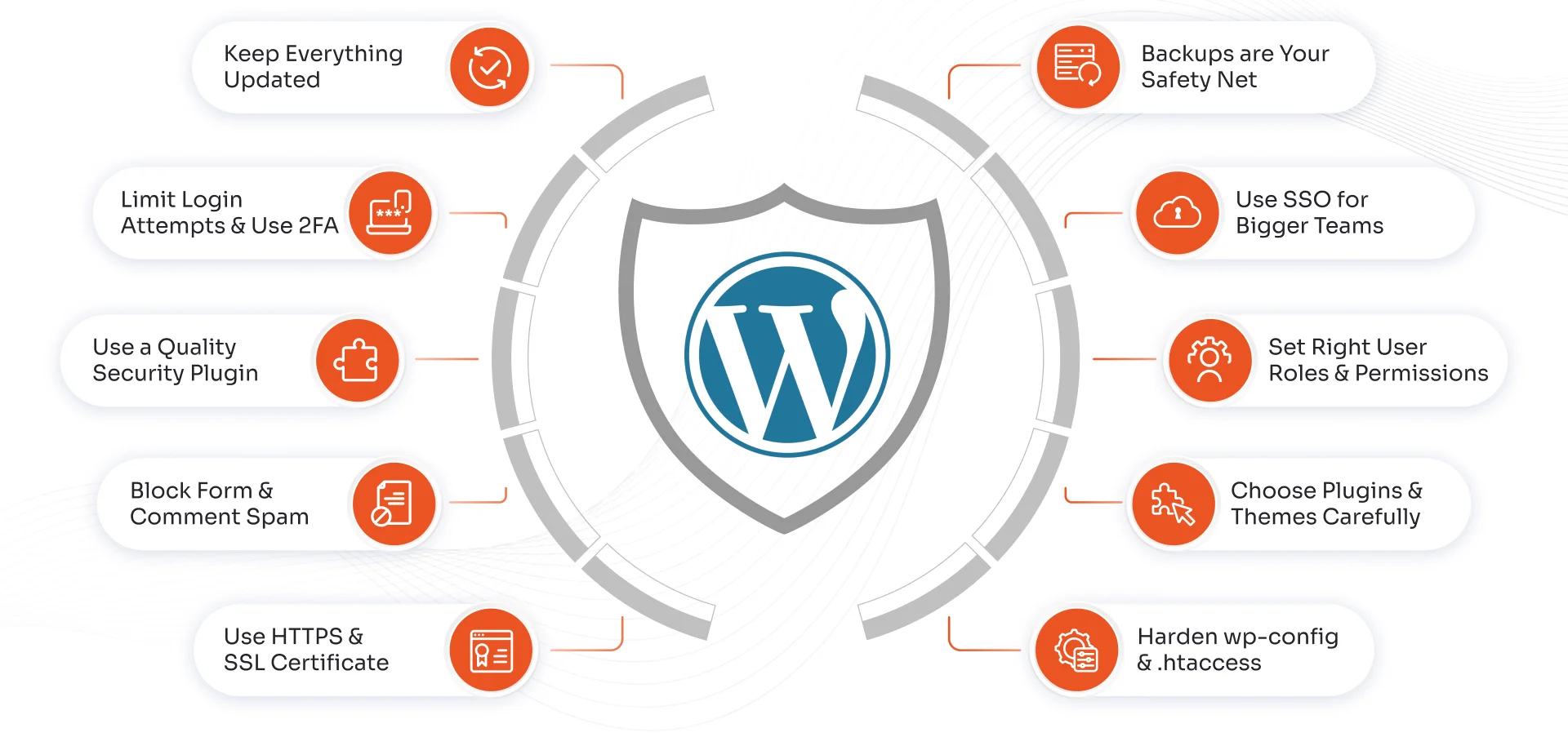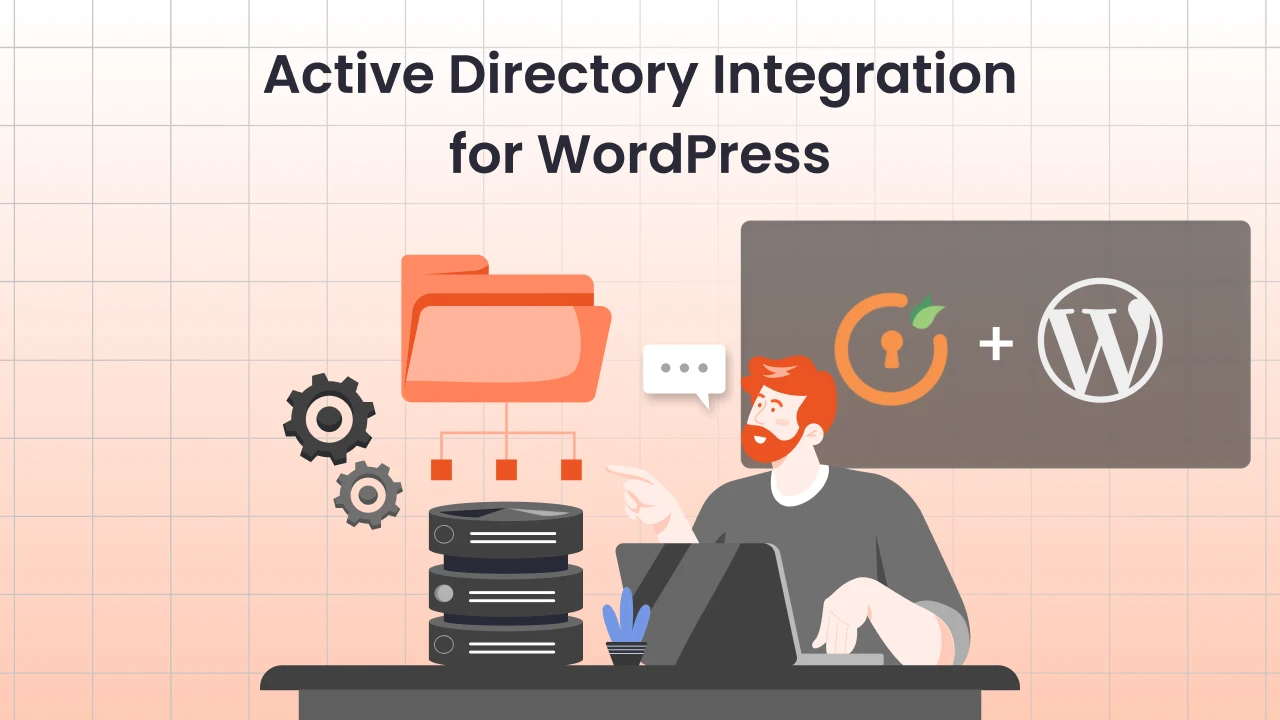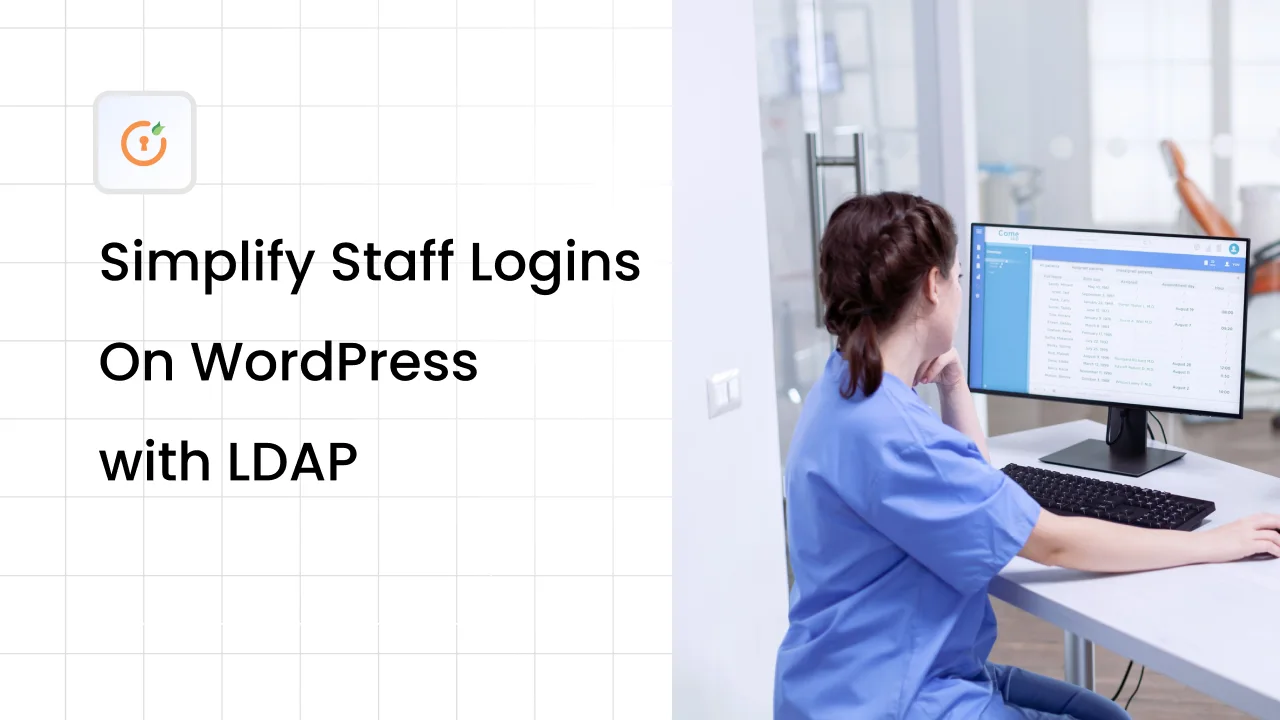Your WordPress site is more than just a website; it's the heart of your online presence. Keeping it secure and running smoothly is key to providing a reliable user experience. One way to simplify access and strengthen your site’s security is by using SAML Single Sign-On (SSO). But what exactly is SAML SSO, and how can it help protect your WordPress site? Let’s break it down.
What is SAML Single Sign-On (SSO)?
Imagine having a single key that unlocks all doors. Single Sign-On works in a similar way for websites and popular apps. Using SAML (Security Assertion Markup Language) protocol, SSO allows you to use one set of login credentials, such as a username and password, to multiple platforms without logging in separately each time.
Here’s how it works with your WordPress site. When a user tries to log in, the request is sent to an Identity Provider, also known as an IDP. The IDP is a trusted source that handles the login process. If the login is successful, it sends a secure confirmation to the Service Provider, or SP, which in this case is your WordPress site. Your site then grants access based on that trusted response, so there’s no need to log in again in SP.
This makes it easier and faster for users to reach what they need on your WordPress site without dealing with repeated sign-ins. It saves time and adds an extra layer of security while keeping the experience smooth and convenient.
How SAML SSO Secures WordPress Sites?
Using SAML Single Sign On (SSO) can make accessing your WordPress site simpler and a lot safer.
Here's how:
Say Goodbye to Remembering Passwords
We've all been there — trying to remember which password we used for a particular site. SAML Single Sign On cuts down on the need to remember all your passwords. Since users only need one set of credentials, they're less likely to pick easy-to-guess passwords or use the same password everywhere. This means users get the freedom to set complex and hard-to-hack passwords without the worry of remembering them, ensuring both security and ease.
Centralized Security For All Websites
Similar to a security center where guards verify IDs before granting access to someone in a building, WordPress SSO serves as a central location for user identity verification. When users log in via Single Sign On solutions, their identities are confirmed, and they can access other connected services without having to verify their identities again.
Simplified User Login Process
Nobody likes to fill out long forms or remember another password. SSO makes the login process fast and simple, which means happier users, enhanced security, and fewer headaches for everyone involved. With Single Sign On solutions, users can focus on the tasks they need to complete instead of spending time and effort remembering different login credentials.
Boost Your Login Security
Most Identity Providers support Multi-Factor Authentication (MFA) which can add an extra security layer to your WordPress SSO solution. It’s like a second lock on your door, which means even if someone gets your key (password), they still can't get in without the second lock's key.
Easy User Provisioning & De-Provisioning
Single Sign On simplifies the process of granting or removing new users/customers access to a WordPress website using its SCIM User Provisioning feature. This helps keep the WordPress site secure by ensuring only the right people can get in.
Why Do Enterprises Prefer SSO Over Native WordPress Login?
Enterprises often skip the default WordPress login system and choose Single Sign-On (SSO) for one simple reason: scalability and control. Here’s why SSO is better suited for enterprise use:
Centralized Identity Management
Enterprises already use identity providers like Azure AD, Okta, or Google Workspace to manage employee access. With SSO, WordPress becomes part of that central system.
Automated User Lifecycle Management
SSO enables automatic provisioning and de-provisioning of WordPress users based on changes in the central directory. Native WordPress login offers no such automation and requires manual effort.
Stronger Security and Reduced Risk
No need to create separate passwords for WordPress. This reduces phishing risk, credential reuse, and human error, common pain points in enterprise environments.
Consistent Access Policies Across Apps
With native WordPress login, enforcing MFA, device-based access, or IP restrictions means relying on third-party plugins. SSO brings all of this under the IdP’s control, uniform and secure across all enterprise tools.
Audit and Compliance Ready
All logins are logged by the IdP, helping enterprises meet internal and external compliance requirements.
Let’s take an example to understand this in an easier way. Consider a large enterprise that runs a WordPress-based learning management system (LMS) for 5,000+ employees. If they used native WordPress login:
- Every new employee would need a separate WordPress account
- Password resets would flood the IT team
- Removing access for former employees would require manual work
With SSO (e.g., Azure AD), access is granted or revoked automatically based on the employee’s status in the directory. Password policies, MFA, and group-based access are enforced centrally.
Wrapping Up
SAML SSO offers a win-win for WordPress site owners and users alike. It simplifies login while giving your site a solid boost in security.
If you're tired of juggling passwords and worried about keeping your site safe, it might be time to give miniOrange SAML SSO or miniOrange OAuth SSO a try. These plugins can be integrated with various IDPs/servers like Azure AD, Okta, Keycloak and many more.
Contact us at wordpressteam@xecurify.com to learn more about how our SAML Single Sign-On solution can benefit your organization.
Our team is ready to guide you through every step — from the initial consultation to deployment and beyond. Reach out today to take the first step toward effortless, secure authentication.
FAQs
What Are the Benefits of Logging into WordPress with Third-Party SSO?
Logging into WordPress using third-party SSO platforms brings key advantages for IT teams and users alike:
- Centralized Access Control: Manage user access across multiple applications, including WordPress, from a single identity provider (IdP).
- Faster Onboarding & Offboarding: User provisioning and de-provisioning are automated via the IdP, ensuring only the right people can access WordPress.
- Fewer Passwords to Manage: Users log in with their existing enterprise credentials, reducing password fatigue and the risk of reuse.
- Improved User Experience: Users enjoy seamless access to WordPress along with the rest of their apps, with fewer login interruptions.
- Support for MFA & Conditional Access: You can enforce organization-wide security policies like MFA, IP restrictions, or device-based login.
- Better Audit & Compliance: Centralized logs and identity governance make it easier to meet internal and external compliance standards.
This approach is especially useful for enterprises, LMS platforms, and internal portals where secure access and simplified management are top priorities.




Leave a Comment